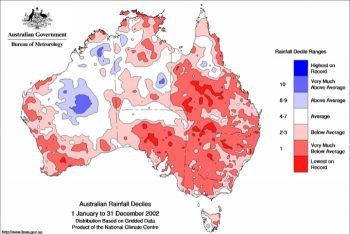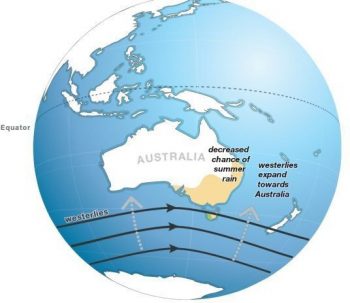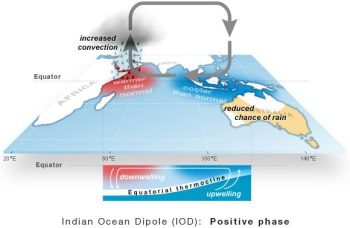By Ben Deacon Posted Fri 6 Sep 2019, 6:01am
Refer to ABC News media report “Rare weather event over Antarctica driving Australia’s hot, dry outlook” dated 6 September 2019.: https://www.abc.net.au/news/2019-09-06/rare-weather-event-over-antarctica-drives-hot-outlook/11481498
A rare and recent weather event in the stratosphere over the South Pole is expected to deepen one of the worst droughts in Australian history and has prompted a serious warning from Australia’s largest air conditioning manufacturer.
Seeley International is concerned that lives could again be lost this Summer. If the Sudden Stratospheric Warming (SSW) delivers as predicted, Australia will suffer one of its driest and hottest years on record. Governments and communities everywhere need to understand that NOW is the time to act, to prevent heatwave-related casualties and also deaths.
Seeley International Founder and Executive Chairman, Mr Frank Seeley AM, said: “Earlier this year we saw an Australian capital city earn the title of the hottest city on the planet as Adelaide sweltered through its highest- ever temperature of 46.6C. What needs to be understood is that heatwaves are one of Australia’s deadliest natural hazards, and yet many of us are still not ready to avoid this very real disaster.”
“However, perhaps even more concerning is that 20 per cent of people surveyed by the Bureau of Meteorology late last year, were concerned about the impact of energy prices on their ability to use air-conditioning,” Mr Seeley said.
“There’s every reason to expect more deadly heatwaves across Australia again this summer because of this SSW event, and there’s evidence that suggests the frequency of heatwaves in Australia is increasing. We know that in heatwaves power demand can more than double due to use of air-conditioning. This creates an ever-growing risk of overloading electricity grids and causing blackouts and brownouts., Therefore it is critical for people to install or upgrade their air conditioners to something that is much more energy-efficient, if they want to stay cool and reduce demand on the system,” he said.
“Arguably, many of those past, very tragic deaths could have been prevented, had there been energy-efficient cooling in place. Every year we hear messages about preparing for the bushfire season and having a plan to stay or go, but we need to issue the same warnings, educating people that heatwaves are also deadly, so they need to prepare for them now,” Mr Seeley said.
“In the face of such a growing national energy/safety crisis, it is imperative for governments and communities to take action to warn and to encourage the nation to reduce its energy consumption without compromising health and welfare, by investing now in energy-efficient air-conditioning technology that can address both these issues at the same time,” he said.
“There are next-generation air-conditioning technologies on the market now that are up to 80% cheaper to run than conventional air conditioning, while still offering comparable and in some cases, superior cooling performances.
To view Seeley International’s world leading climate solutions please click here.
Read the full article below:
![]()
Rare weather event over Antarctica driving Australia’s hot, dry outlook ABC Weather
By Ben Deacon Posted Fri 6 Sep 2019, 6:01am
A rare event that took place 30 kilometres above the South Pole last week is expected to impact upon Australia’s rainfall outlook.
The upper atmosphere above Antarctica warmed by as much as 40 degrees Celsius in the course of a few days — and it is continuing to warm. This rare phenomenon, known as sudden stratospheric warming (SSW), could deepen one of the worst droughts in Australian history.
The Bureau of Meteorology’s Harry Hendon warned of dry weather ahead. “We will typically see conditions across most of Australia, but primarily concentrated in the eastern part of Australia, become warmer and drier through spring and into early summer,” Dr Hendon said.
SSW is rare in the southern hemisphere with only one major event ever identified, in 2002 — one of Australia’s driest years on record.

PHOTO: 2002 had record low rainfall, influenced by a sudden stratospheric warming. (Supplied: Bureau of Meteorology).
Dr Hendon said similar, less intense stratospheric warmings had been linked to other dry years in Australia.
“In the past 30 years we probably have had five or six occurrences that didn’t quite qualify as a sudden stratospheric warming,” he said.
“We looked at what happened over that period and we’re pretty confident that we will see an increase in temperatures and a decrease in rainfall in central-eastern Australia in the following months.”
Not climate change but ‘natural phenomenon’
SSW is not thought to be caused by global warming.
“We view SSW as a natural, internally-generated phenomena,” Dr Hendon said. “It just happens to be very rare in the southern hemisphere.”
It is much more common in the northern hemisphere where SSWs are associated with cold weather.
Last February, the ‘beast from the east’ storm that covered much of Europe in snow was triggered by an SSW over the North Pole.
Antarctic temperatures affect Australia
Sudden stratospheric warming over Antarctica causes westerly winds south of Australia to track further north, a pattern meteorologists refer to as a ‘negative SAM’.
In spring and summer, this negative SAM pattern brings warmer, drier air into southern Queensland and New South Wales.

PHOTO: In summer, a negative SAM is associated with a decreased chance of rain in central-eastern Australia. (Supplied: Bureau of Meteorology)
“Unfortunately, these are areas already in drought,” said a lead author of the BOM’s spring climate outlook, Andrew Watkins.
Dr Watkins said cooler than normal water in the Indian Ocean, a phenomenon meteorologists call a ‘positive IOD’, has led to a lack of moisture drifting over the continent.
“This has certainly been a big factor in why winter has been so dry in virtually all of Australia,” he said.
“On top of that, we have the likelihood of prolonged periods of negative SAM, which also brings drier conditions to New South Wales and southern Queensland.
“So it’s a bit of a double whammy in those locations.”

PHOTO: A positive IOD is associated with a reduced chance of rain. (Supplied: Bureau of Meteorology)
Dr Watkins said the impact of the SSW may be felt in Australia through to the end of the year.
“These sudden stratospheric warming events and the patterns that we see from them can go from September [to] October, sometimes persisting through to January,” he said.
Dr Hendon said he was gratified the Bureau of Meteorology’s computer models were able to predict the event.
“In 2002 we didn’t even know about it until after it happened, and we didn’t know if we would ever be able to predict it,” he said.
“It’s exciting for us now that we have predictive capability that we didn’t have in 2002.”
To view Seeley International’s world leading climate solutions please click here.